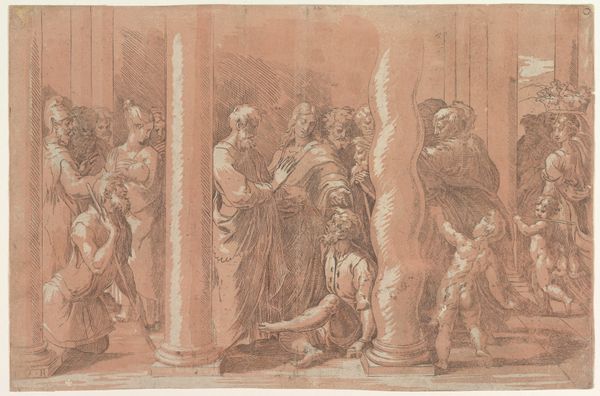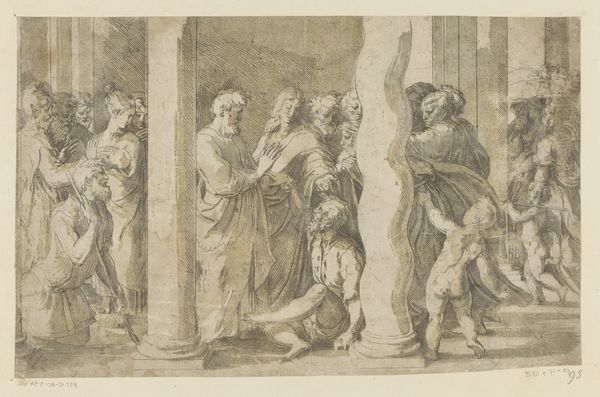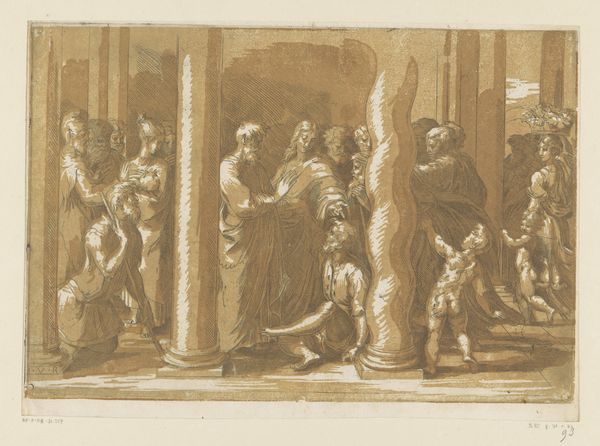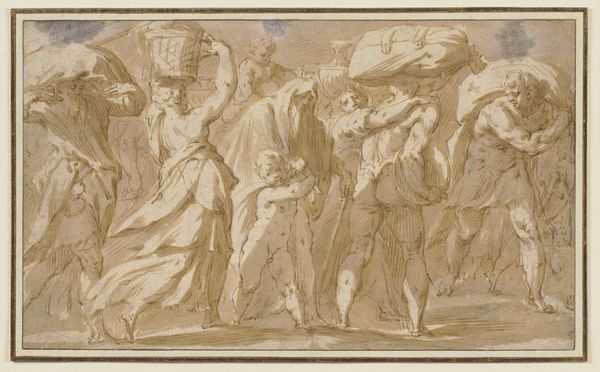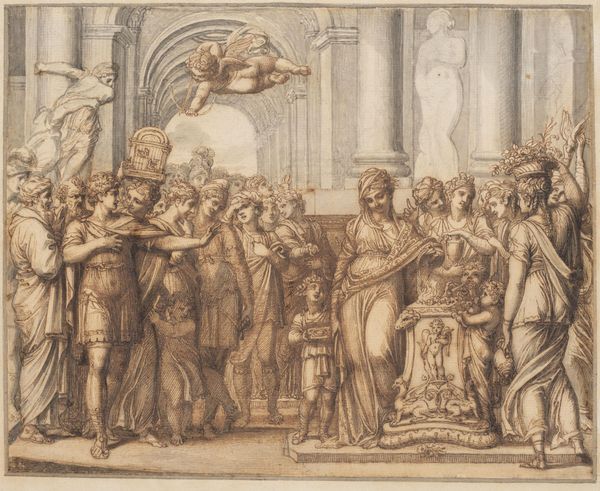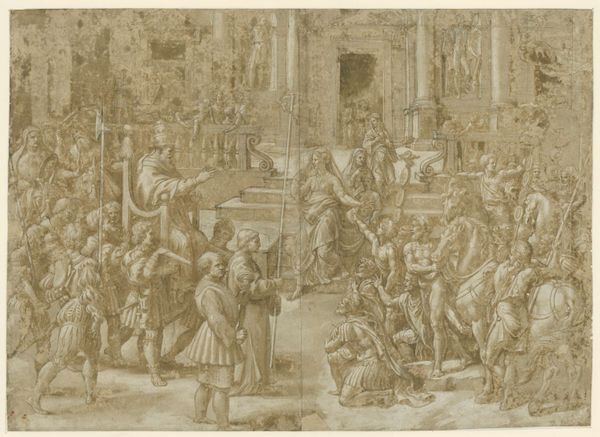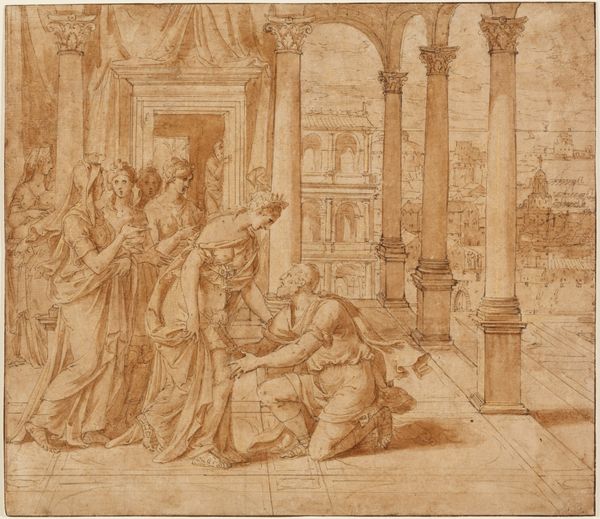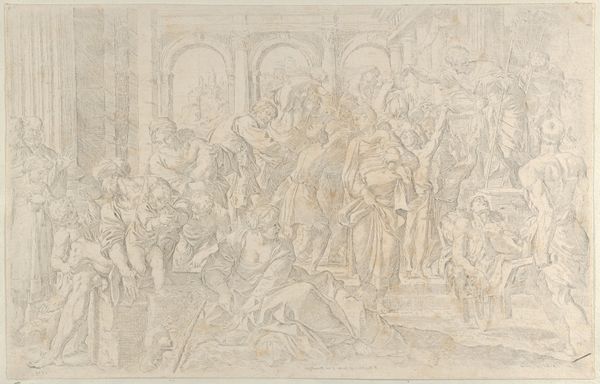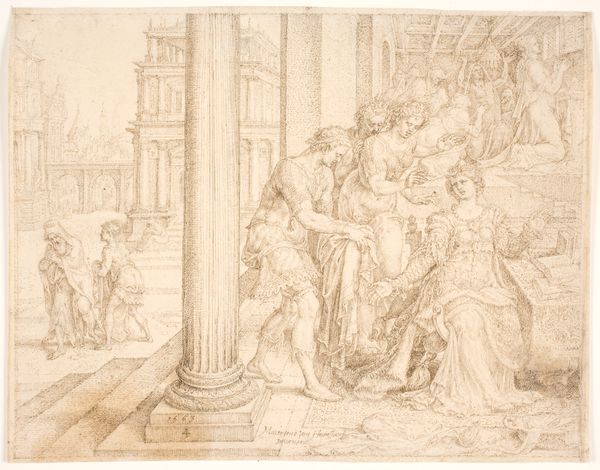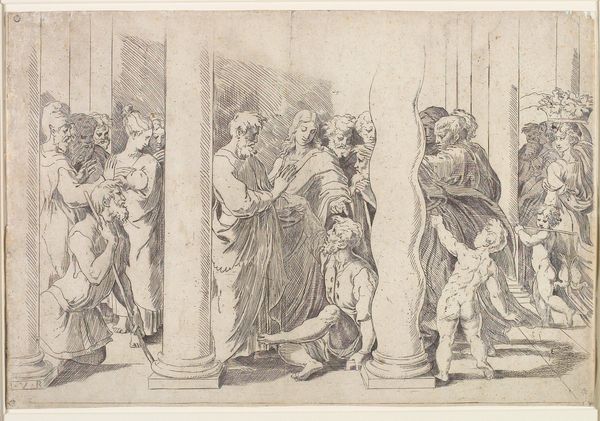
Saints Peter and John Healing the Sick at the Gates of the Temple c. 1530
0:00
0:00
drawing, print, intaglio, ink, engraving
#
drawing
# print
#
intaglio
#
ink
#
history-painting
#
italian-renaissance
#
engraving
Dimensions: 11 x 15 5/8 in. (27.94 x 39.69 cm) (sheet, trimmed within platemark)
Copyright: Public Domain
Editor: Here we have "Saints Peter and John Healing the Sick at the Gates of the Temple," an intaglio print from around 1530 by Parmigianino. It’s currently held at the Minneapolis Institute of Art. It's incredible how much detail he achieved. The expressions of those seeking help are very evocative, but I can't help but feel a sense of distance from the emotional depth of the figures due to the artist’s unique engraving. What narratives are at play in this print? Curator: That sense of distance you're picking up on is interesting. Let's consider the print within the historical and social context. Parmigianino was working during a time of massive religious and social upheaval with the Reformation in full swing. What kind of impact would representing religious figures have during this moment in history? The figures are not portrayed as inherently holy but seemingly engaged in a reciprocal relationship with the crowd of less fortunate people in their vicinity, what does that suggest? Editor: I guess showing Saints Peter and John performing a miracle reinforces the power of the Church but their actions are very accessible. Perhaps it's about emphasizing their roles as servants of the people? But is there also something subversive happening? Curator: Precisely! Consider also how the figures in need are depicted. They are not idealized, and instead their suffering is emphasized which provides them with an element of dignity. It allows for a degree of social commentary, reflecting Parmigianino’s understanding of the human condition that can be extracted through feminist theory. By depicting their plight with such honesty, he humanizes those marginalized by society, prompting us to consider their experiences with empathy and respect. What might Parmigianino be suggesting about the role of the Church within that social structure? Editor: So it becomes less about the divine intervention and more about highlighting the community’s inherent power through their interactions with religious figures. It completely shifts the focus! I didn’t initially see it that way. Curator: It demonstrates how understanding the socio-political context enriches our viewing experience. I find the way he balanced those elements very powerful to contemplate. Editor: Me too, thank you. This has reshaped my perception, I hadn't considered how historical and cultural context could give this image even greater depth.
Comments
minneapolisinstituteofart almost 2 years ago
⋮
The gift of this important pair of Mannerist prints is just one example of the Jones family's continued support of the Institute's Department of Prints and Drawings. Herschel's son Carl Waring Jones (1887-1957) was instrumental in revitalizing the department in the 1950s and funded an educational program dedicated to prints. Carl's children-Winton Jones (1924-2003), Waring Jones (b. 1927), and Thirza Jones Cleveland (1929-97)-later contributed to the renovation of the print gallery and study room named in honor of their grandfather. Winton inherited his grandfather's passion for collecting, and his family recently designated Gallery 344 in his name and endowed a fund so the museum could continue to add significant works on paper to the collection.
Join the conversation
Join millions of artists and users on Artera today and experience the ultimate creative platform.
